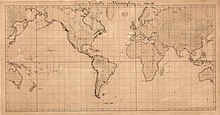User:Magnus J/sandbox
 Drawing of a juri man from 1823 in Reiseatlas von Spix und Martius. | |
| Total population | |
|---|---|
| ? in | |
| Languages | |
| Yuri | |
| Religion | |
| Indigenous beliefs | |
| Related ethnic groups | |
| Passes (or Pasé) |
The Juris (also Juri, Yuri)[1] were a tribe of South American Indigenous people, formerly occupying the country between the rivers Içá (lower Putumayo) and Yapura, north-western Brazil. In ancient days they were the most powerful tribe of the district, but in 1820 their numbers did not exceed 2000. Owing to inter-marrying, the Juris are believed to have been extinct for half a century. They were closely related to the Passes, and were like them a fair-skinned, finely built people with quite European features.
Language
[edit]Data on the Yuri language (Jurí) was collected on two occasions in the 19th century, in 1853 and 1867. The american linguist Terrence Kaufman notes that there is good lexical evidence to support a link with Ticuna in a Ticuna–Yurí language family (1994:62[2], after Nimuendajú 1977:62), though the data has never been explicitly compared (Hammarström 2010).
What is the relation to Carabayo?
[edit]It is commonly assumed that the Juri people and their language has survived among the uncontacted people or peoples of the Rio Puré region. The name "Yuri" is often used as a synonym for the only named people in the area, the Carabayo in Colombia. A list of words collected in 1969 from the Carabayo, only recovered in 2013, suggests the language is close to Yuri, though perhaps not a direct descendant.
Borja Bay in various expeditions
[edit]When Robert Fitzroy and the Beagle travelled in the stratis of Magellan in the early 1930s they got several times to Borja Bay.
The Scottish naturalist Robert O. Cunningham (1841-1918) travelled to South America and writes that they anchored in Borja Bay on the north shore of Crooked Reach on the 1st of January 1869. They came across several wigwams and the remains of a bark canoe[3].
Magnus J/sandbox | |
|---|---|
 | |
| Born | 20 June 1861 |
| Died | 1945 Manila |
| Family | Alfred Gabriel Nathorst |
 Twa in the Bangweulu lake. Photo by Eric von Rosen 1911-1912. | |
| Total population | |
|---|---|
| ? | |
| Regions with significant populations | |
| ? | |
| Languages | |
| Bemba language | |
| Religion | |
| Roman Catholicism (often syncretic with indigenous beliefs) | |
| Related ethnic groups | |
| Moré (Itene), Chapacura | |
Family
[edit]References
[edit]- ^ Métraux, Alfred (1946). Steward, Julian Haynes (ed.). Tribes of the middle and upper Amazon River. In Handbook of South American Indians. Volume 3. The Tropical Forest Tribes. Internet Archive. Washington, U.S. Govt. Print Off. p. 708.
- ^ Kaufman, Terrence (1994). The native languages of South America". In Moseley, Christopher and R.E. Asher (ed.). Atlas of the world's languages. London: Routledge. pp. 46−76.
- ^ Cunningham, Robert O. (2012-01-26). Notes on the Natural History of the Strait of Magellan and West Coast of Patagonia: Made During the Voyage of HMS Nassau in the Years 1866, 67, 68, and 69. Cambridge University Press. ISBN 978-1-108-04185-0.
This article is based on a translation of the equivalent article of the German Wikipedia

